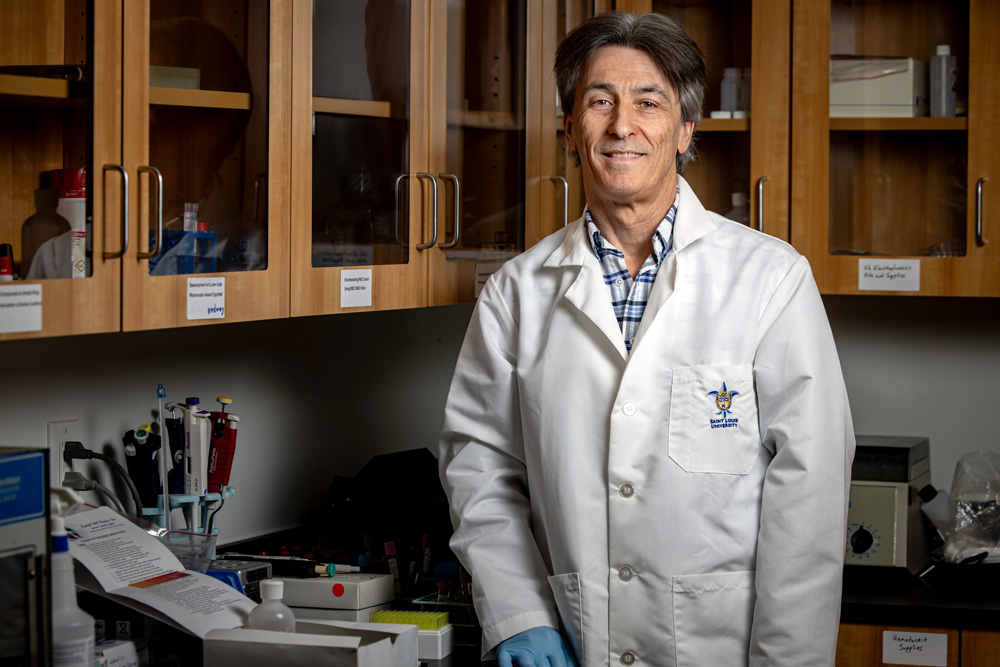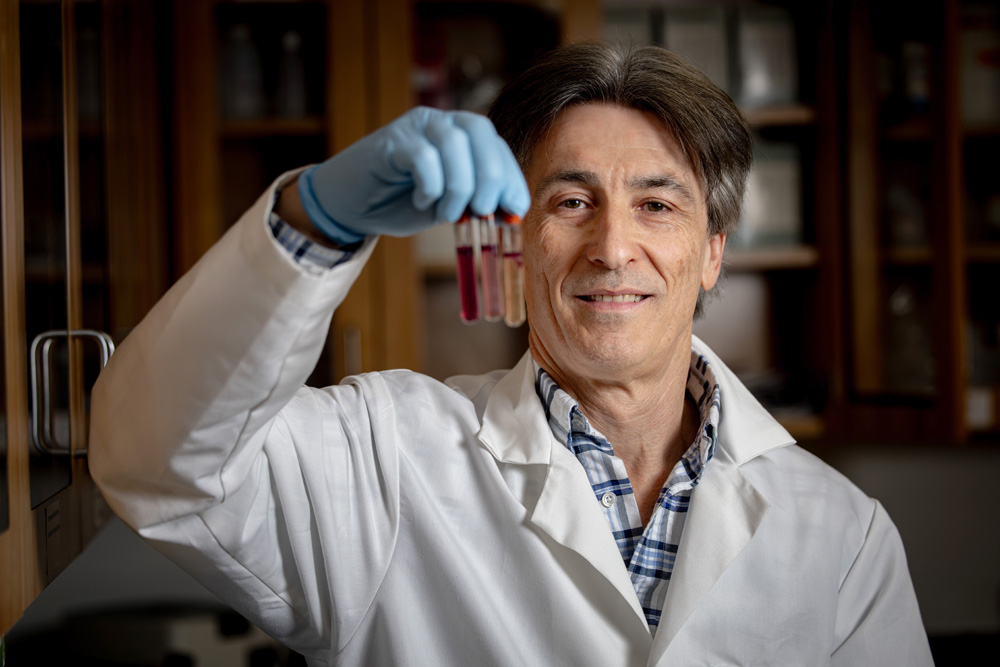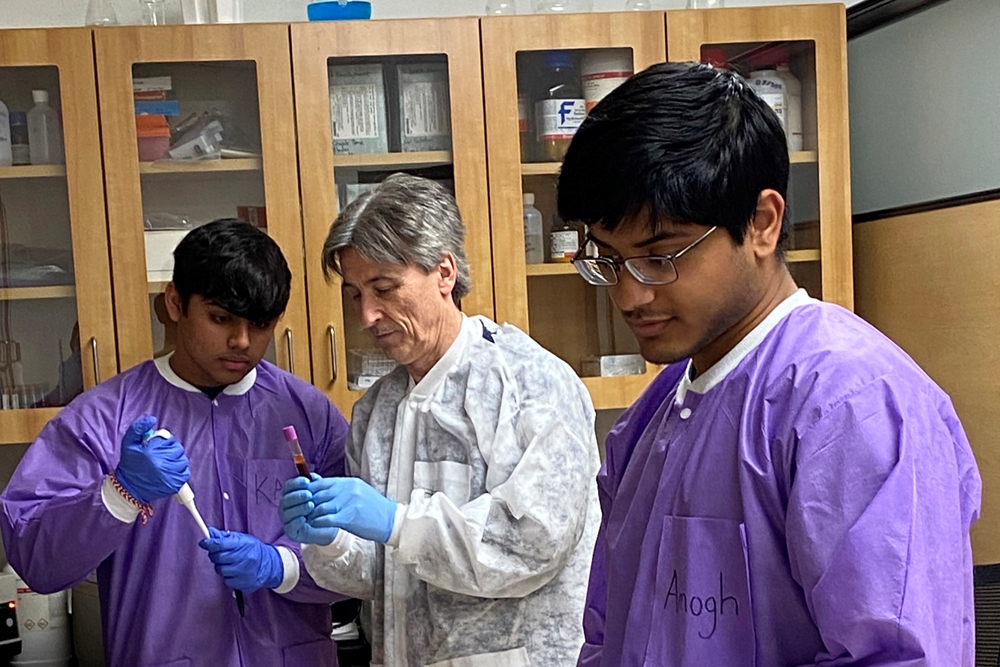

Biomedical Research
In 2010, Dr. Randolph redirected his university research activities toward the development of low-cost diagnostic testing methods, particularly testing to support the sickle cell program. Since then, he has developed and patented a new diagnostic laboratory test for sickle cell (Sickle Confirm) that overcomes the barriers encountered in Haitian medical clinics. Laboratory testing in Haitian clinics must be inexpensive, fast, simple, and preferably not require electricity (power or refrigeration). The new Sickle Confirm test has shown a very high sensitivity (>95%) and specificity (100%) when performed by the research team on Haitian samples. Sickle Confirm has been field tested in four partner Haitian clinics and in Senegal Africa to determine sensitivity and specificity when performed by unsupervised Haitian and African laboratory professionals on local patients. The field-testing phase of the project was funded by two small grants from the American Society for Clinical Laboratory Education and Research Fund (ASCLS E & R) and the Jack DeLoss Taylor Charitable Trust Fund.
Two additional tests have been developed to support the sickle cell program in Haiti. Dr. Randolph developed and patented a method to measure hemoglobin F (HbF) in blood samples. Patients with sickle cell disease are prescribed hydroxyurea, a drug that stimulates the body to make HbF that is normally only made in utero and shortly after birth. As more HbF is made in response to the drug, less HbS (sickle hemoglobin) is made, reducing symptoms. The new HbF Assay is used to measure the amount of HbF in the patient’s blood to determine how much HbF was produced. The more produced, the greater the symptom reduction.
Another new method, Falling Drop Hemoglobin Method, is a test to measure total hemoglobin that does not require electricity or even batteries to determine a total hemoglobin level. Not only can the Falling Drop Hemoglobin Method be used to assess anemia in any patient, it is also particularly needed to accompany Sickle Confirm for labs that have no access to electricity.
Two other methods are currently in development to support the sickle cell program: Zygotest, and the HbC Assay. Zygotest is a microscopic method that will also detect and distinguish people with sickle cell disease from carriers with sickle cell trait. Zygotest can be a supplement to, or alternative for, the Sickle Confirm test.
HbC is a “cousin” to HbS (sickle cell) but it is not as serious as sickle cell disease. However, if a person inherits HbC from one parent and HbS from the other parent, they have a form of sickle cell disease called HbSC Disease. This is a very serious condition that requires accurate diagnosis. The Hb C Assay will detect the HbC and Sickle Confirm will detect the HbS. Together, Sickle Confirm and the HbC Assay will accuracy diagnose patients with HbSC Disease.
Our research lab is also working on methods to perform low-cost complete blood counts (CBC). We are also testing a wide range of natural plants that may have anti-sickling properties to be used as treatment for sickle cell disease. If we find plants that work well to treat sickle cell disease, we plan to grow these crops on the Sickle Care Center property to make them available to our patients at very low cost.
The goal of the sickle cell program is to obtain grant funding and use profits from our Labsco businesses to test and treat all patients diagnosed with sickle cell anemia among our partnering clinics. Each participating clinic would serve as a sickle cell center for that region of the country and the RWM Sickle Care Center would serve as a resource to all.
Two additional tests have been developed to support the sickle cell program in Haiti. Dr. Randolph developed and patented a method to measure hemoglobin F (HbF) in blood samples. Patients with sickle cell disease are prescribed hydroxyurea, a drug that stimulates the body to make HbF that is normally only made in utero and shortly after birth. As more HbF is made in response to the drug, less HbS (sickle hemoglobin) is made, reducing symptoms. The new HbF Assay is used to measure the amount of HbF in the patient’s blood to determine how much HbF was produced. The more produced, the greater the symptom reduction.
Another new method, Falling Drop Hemoglobin Method, is a test to measure total hemoglobin that does not require electricity or even batteries to determine a total hemoglobin level. Not only can the Falling Drop Hemoglobin Method be used to assess anemia in any patient, it is also particularly needed to accompany Sickle Confirm for labs that have no access to electricity.
Two other methods are currently in development to support the sickle cell program: Zygotest, and the HbC Assay. Zygotest is a microscopic method that will also detect and distinguish people with sickle cell disease from carriers with sickle cell trait. Zygotest can be a supplement to, or alternative for, the Sickle Confirm test.
HbC is a “cousin” to HbS (sickle cell) but it is not as serious as sickle cell disease. However, if a person inherits HbC from one parent and HbS from the other parent, they have a form of sickle cell disease called HbSC Disease. This is a very serious condition that requires accurate diagnosis. The Hb C Assay will detect the HbC and Sickle Confirm will detect the HbS. Together, Sickle Confirm and the HbC Assay will accuracy diagnose patients with HbSC Disease.
Our research lab is also working on methods to perform low-cost complete blood counts (CBC). We are also testing a wide range of natural plants that may have anti-sickling properties to be used as treatment for sickle cell disease. If we find plants that work well to treat sickle cell disease, we plan to grow these crops on the Sickle Care Center property to make them available to our patients at very low cost.
The goal of the sickle cell program is to obtain grant funding and use profits from our Labsco businesses to test and treat all patients diagnosed with sickle cell anemia among our partnering clinics. Each participating clinic would serve as a sickle cell center for that region of the country and the RWM Sickle Care Center would serve as a resource to all.
 In Lab
In Lab

Looking at Sickle Confirm Tubes

In Lab with Research Students
